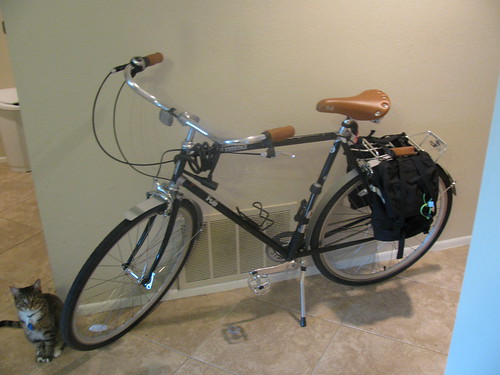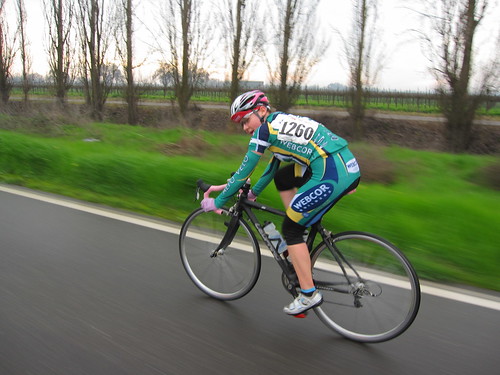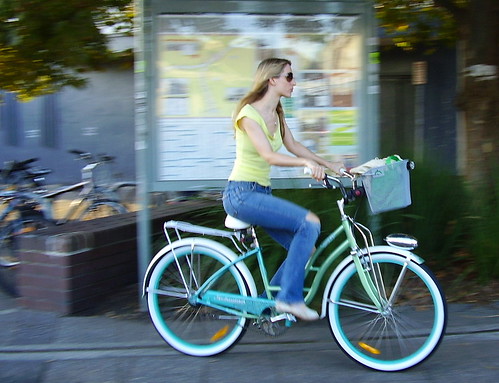Really, I'd love one day to get up and post on this blog about the massive new service expansion that RTA is planning. If only RTA would get around to planning one. At least I have
good news to report about the City from time to time.
Nope, here I get to fire up the 'ole intertubes and tell you all about the latest service cuts that our meagre little transit system is going to suffer from. And this time around, Riverside is most certainly NOT spared.
The bulk of these cuts are to weekend service, most of them eliminating one trip in the morning, one in the evening, or both. Routes that are seeing cuts of this kind are:
10, 11, 12, 13, 19, 20, and 27.
The following routes are losing more than one trip on either end of the schedule on weekends:
16, 18, 20, and 21.
The
13 is losing the first morning run westbound, and is also losing a weekday school tripper. (If a school tripper is under consideration for cancellation, I support it- if those buses aren't packed, something's wrong.)
The
14 is losing a trip in each direction on weekend mornings, and two on Sunday mornings. The service frequency will also be "expanded" (downgraded) from 70 to 80 minutes. As if it wasn't bad enough already.
Routes
32 and 42 are losing weekday morning trips, with 42 also losing a mid-afternoon run (another school tripper). The 42 will also be "expanded" (downgraded) on weekends from the current 50 minutes to 140, probably the most egregious cut in this proposal.
Route
57, the Temecula Trolley, will be cut entirely. This route had the same failings as route 52 (in that it only runs for a few choice hours a day), and has now lost its funding. No surprise here, and really no loss.
There's one route left, the 25, but I first want to talk about these nighttime service cuts generally. Somebody at the Southern California Transit Forum, and I forget who, made a very good point- nobody wants to be on the last bus. No matter when the last bus of the night is, there will always be depressed ridership, because nobody wants to miss that bus. RTA is cutting a lot of these nighttime buses because they have low ridership, and they may find that the low ridership will simply move back a trip.
Now, on to the
25, the only route to see route modifications. Aside from the weekend trip reductions, and an "expansion" (downgrade) of frequency from 70 to 80 minutes, RTA wants to remove the section of the route that travels along Barton through Grand Terrace and Loma Linda, replacing it with freeway running along I-215 and I-10, from Barton to Anderson. This is a spectacularly
bad idea. My wife drives that stretch of freeway often, and I've had occasion to enjoy a drive along Anderson from Barton to the 10. These are highly, highly congested corridors. I usually exit the freeway at Mt. Vernon and take Barton over the hills, simply to avoid the heavily-trafficked mess that is the 215 south of Colton. Not to mention Anderson St., which is a narrow road controlled largely by stop signs, and one that is handling far, far too much traffic for its size. I fully support the RTA's idea of discontinuing service along Barton in San Bernardino County- Omni already runs half-hourly service there, and RTA isn't paid for by San Bernardino County residents, let's be honest- but freeway running is NOT the way to do it. Instead, I think that RTA should run the 25 as a closed-door service, eliminating all stops between the current last stop in Grand Terrace, Barton at Glendora and running directly to the VA Hospital. Alternatively, the route could discharge only while travelling northbound past Glendora, and pick up only while travelling southbound, but I think this would be confusing for riders who aren't used to such arrangements. The surface streets may be slower at some off-peak times (though probably not most), but the added reliability of schedules on the surface streets will be a definite asset to the route. Freeway running will make things miserable for anyone that rides #25, and furthermore will end all service into Grand Terrace proper. (Yes, I know Grand Terrace is in San Bernardino County, but the 25 is currently their only public transit. Perhaps RTA could pursue funding from SANBAG or the City of Grand Terrace for the portion of the route that runs in their county?)
Public meetings are scheduled to solicit input on these service cuts. Let me first admonish anyone that the best way to advocate for a particular trip or route is to come up with a way to fund it, and the second-best way is to show a need that is met by this route that is essential, and that will go unmet if the route is cancelled. That said, here's the meeting schedule:
Monday, March 110:00 Multipurpose Room, Corona City Hall
400 S. Vicentia Ave., Corona, CA
Route 1, Corona Cruiser Red & Blue
14:00 Lake Elsinore Senior Activity Centre
420 E. Lakeshore Dr., Lake Elsinore, CA
Route 7
18:00 Moreno Valley Council Chambers
14177 Frederick St., Moreno Valley, CA
Routes 11 & 20
Tuesday, March 210:00 East Room, San Jacinto Community Centre
625 Pico Avenue, San Jacinto, CA
Routes 42 & 74
14:00 Room R1, Kay Cisneros Community Centre
29995 Evans Rd., Sun City, CA
Routes 40 & 61
14:00 Craft Room, Mary Phillips Senior Centre
41845 Sixth St., Temecula, CA
Routes 23, 24 & 57
18:00 Perris Council Chambers
101 N. D St., Perris, CA
Routes 19, 27 & 30
Short walk from Perris Transit Center, Routes 19, 22, 27, 30, 74, 208, 212
Wednesday, March 310:00 Room 2, Beaumont City Hall
550 E. 6th St., Beaumont, CA
Route 210, Pass Transit 2, 4, and Calimesa Route
18:00 Board Room, RTA Headquarters
1825 Third St., Riverside, CA
Routes 10 & 13
Short walk from 3rd & Chicago, Routes 1, 16, 22, 25, and 51
(If you want to say hello, I'll be at this meeting.)
You can also, as always, comment via e-mail at
comments@riversidetransit.com, calling 1-800-800-7821, or writing to:
Director of Planning
Riverside Transit Agency
1825 Third St.
Riverside, CA 92507







